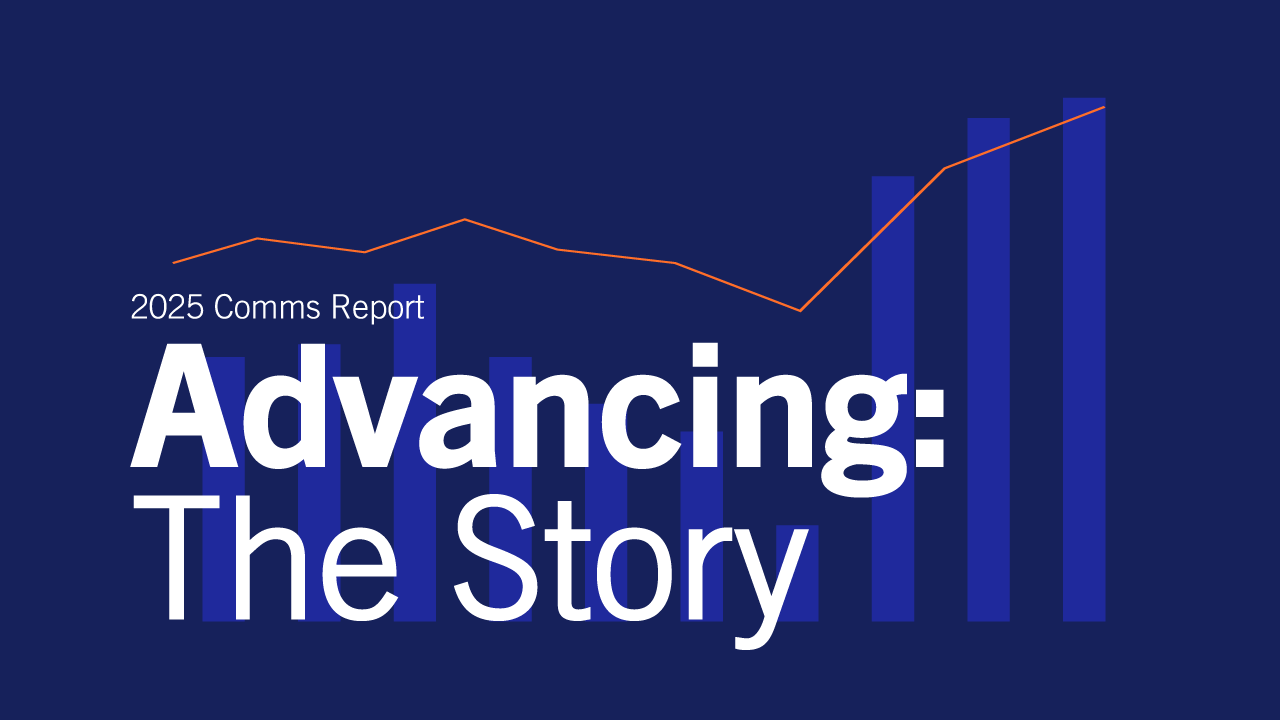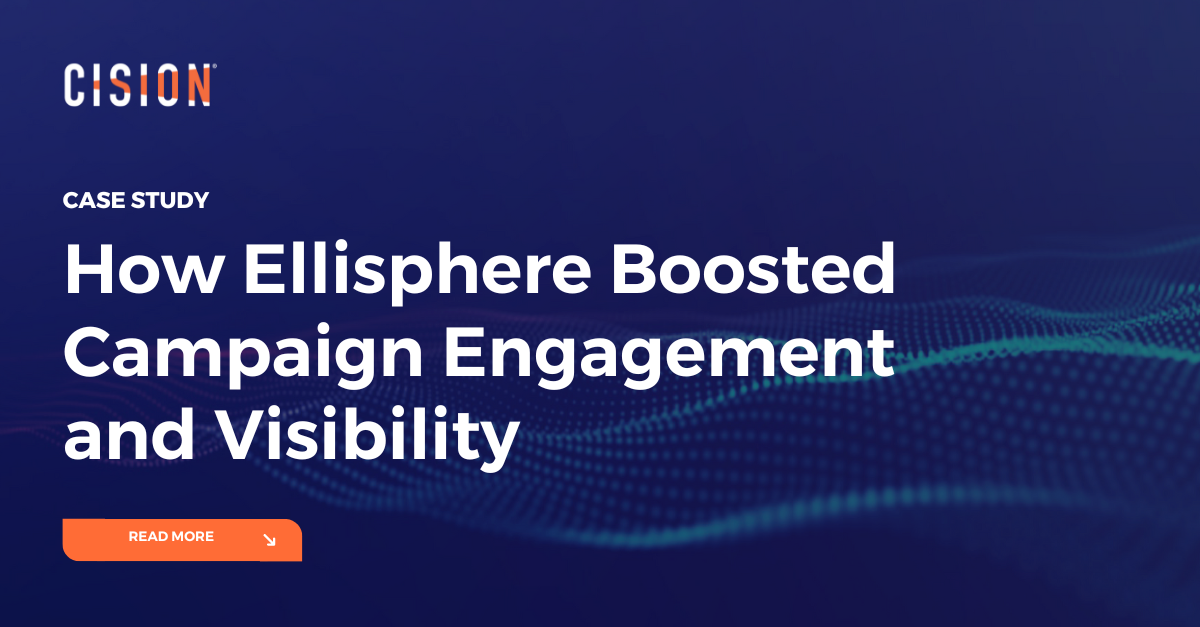Are your reports telling you what you really need to know... or are they simply a way to retrospectively justify decisions that were taken earlier on in the process?
We show you how to take a step back and look at your reports on a top-level, so you can understand how to optimise them and enable your team to make smarter and more data-led communications decisions.
Are your comms reports telling you what you need to know about your audience... or are there still gaps that are holding back your campaigns? This may seem like a simple enough question – but the answer to it isn't quite so straightforward.

Tracking data points that answer questions about ‘who’ your audience is, is only the very first rung on the ladder. The value of data about an audience's age, demographics, gender or education, and income level is limited until it can be referenced against data that brings out:
- the context behind media consumption
- the trust and sentiment audiences give to messages across each channel, platform, or source
- the power of social proof and influential voices within a community
- the unfulfilled needs that are NOT present in historical data
These are the 'gaps' that many PR teams struggle to fill in their reports. That calls for audience insights that can fill in the blind spots and close the gaps to reveal deeper underlying stories. Every single data point forms a part of the greater whole. It's about tracing each spot – and linking it to the next – until you have a complete picture.
Facing the wrong direction
Often, marketers fall into a rut. They try to build their strategy on the data they have, not the data they need. Research by Harvard Business Review shows that 32% of businesses use “descriptive analysis”, but this level of insight is doing no one any favours. It's incomplete, lacking nuance, and unlikely to reach beyond the short tail. .
As Debbie Oates, Director of Customer Engagement at Experian notes: “More than ever, marketers need accurate up-to-date analytical insights to understand, identify, locate, and target their prospects and customers.”
In order to uncover a richer story with all its twists, turns, subplots, and every character's unique perspective, there needs to be a shift in the way in which we analyse and audit audience data.
So, how can you make a much-needed pivot from descriptive analysis to proactive strategy? It starts with having the tools to audit audience reports for the following:
Demographics, interests, and behavioural data
By tracking and mapping data, comms teams can follow the path from an audience's existing interests and attitudes to the subsequent factors that influence purchasing decisions.
It looks beyond who they are to what they do before they buy, enabling comms teams to craft messaging accordingly and refine broad consumer research into sector-specific analysis.
Currently, only 7% of businesses use data prescriptively, but the future cannot be taken so lightly. That's why comms teams need to mine existing data from reports for clues on what will enhance success in the future, synthesising data across channels, devices, and timelines.
The picture is more complex than we might expect at first. But, the good news is that studies point to how demographic data alone can be used to explain certain behaviours such as language, technology use, and social activities.
Asking 'why?' as well as 'who?'
For example, we might know who is using each social media platform, but the more valuable insight is from discovering why different demographics are using particular channels.
That leads us to discover that we’re not all using social media for the same reason: for 49% of Gen Z the purpose of social is to fill up time, for 40% of Gen X it’s to stay up to date with news, while for 39% of Babyboomers it’s a tool to stay in touch with friends.
And what makes this so important?
Give teams this kind of behavioural data to leverage and they can start to connect the dots, optimise content for different channels, and fill in the gaps where audiences could be engaged with a range of choices.
The journey is unlikely to be linear. Audiences do not always encounter and absorb messaging in the order we intended. They might hop between devices and channels, lose the thread (or interest) at critical moments, or disappear "down the rabbit hole" in search of more information when we least expected it.
In turn, our messaging might have to take several passes at the same touch points from different angles, lean on influencers to add authority at key junctures, and above all be ready to answer questions in the order our audience asks them – not according to a prescriptive timeline of our own making.
Targeting in the age of 'News Find Me'
Audience data reveals which sources and platforms are most valuable to a target audience. By extension, that insight reveals which outlets are most effective for engaging them using target media lists and social media outreach. As campaigns evolve, targets and engagement strategies can be refined to support more accurate campaign reporting.
It’s unwise to make any assumptions about news and media consumption, given the speed with which both are evolving. Audiences are increasingly gathering around niche news sources that align with their existing persuasion, and there's a continued shift towards the so-called “News Find Me” approach. Instead of consulting the news, audiences are curating what is allowed to reach their feed. That puts some keywords potentially out of bounds.
Audiences instead of channels
As a result, brands need to align their content with those audiences, not the channels themselves. They need to be aware too of the political and social connotations associated with certain messages, and make inferences about what triggers may be involved. We're in an era where anything from personal healthcare to dietary choices can be politicised and polarising, so brands have to tread delicately with audiences who may define themselves through their news and media consumption choices.
The key takeaway: if audiences are more passive in their news and media consumption (but more assertive in their preferences), the onus is on brands to get more granular with their content to reach the long tail.
That may mean finding the micro-influencers who can draw content deeper towards niche segments and help refine generic messaging into something more salient or palatable.
Data points that paint a picture
By 2020, global audiences were consuming almost 500 minutes of media daily on average. Never have brands had so much opportunity to reach so many consumers for so long. At the same time, it’s harder to carve out a share of the audience, given the fragmented landscape.
To close the gaps in communications reports, comms teams need news and media consumption data that provides insight on the following in particular:
- Habits: what time of day are consumers reaching for their smartphone, and is their attention focused or distracted when they do?
- Devices: are consumers looking for snackable content on mobile, or more scrollable coverage on desktop?
- Format: the value of video content makes it a priority format, but even here there is a range of options, from longer explainer content to “Shorts” and rapid-fire info blasts lasting just a few seconds. Consumers also have a choice between owned and streaming content, affecting the longevity of messaging.
- Personalisation: consumers have a simple choice: enjoy a generic free version of a news or media service, or subscribe to a service in return for better personalisation. Research shows that cost is by no means a barrier to entry and that 76% of consumers will pay for original content with limited distribution.
Shaping brand perceptions
Behind every purchase, there's a perception, wrapped up in the values that a consumer associates with each brand. Audience data can drill down into what values really resonate so that messages and actions can be tailored accordingly.
Comms teams get a forward-facing data stream that can provide a foundation for ongoing reputation analysis and management.
Communications reports do provide useful individual data points. But to audit the data, teams need a perspective of the broader ecosystem.
So-called “vanity metrics” such as likes and shares, may give a glimpse of the bigger picture. But auditing should take into account the sentiment and influence behind each engagement. This insight can be applied to create a richer, more well rounded profile. In that sense, auditing evolves data sets, and cross-referencing sources to build a more complex picture.
Measuring sentiment
Traditional methods such as focus groups, forums, and surveys are still effective, but these are limited to showing the “filtered” view. For the unfiltered version, social media monitoring reveals what audiences really think of brands - and how their perceptions can be challenged or reshaped in the future.
Success for Volvo
Volvo’s traditionally boxy design was perceived as safe yet sensible by consumers. Without compromising on these important features, the brand used audience sentiment data to pivot towards a more minimalist message that chimed with the fashion for all things Scandi. Mapping the message to an emerging trend helped Volvo reposition a lack of flourishes as a benefit for consumers.
The importance of brand values
There’s an increasing urgency to monitor brand values. Increasingly, brands are expected to take a position on issues making the headlines, even when governments stay silent. That’s particularly true when it comes to sustainability and diversity.
One IBM study found that purpose-driven customers now account for 44% of consumers overall. To serve them, brands need to be more transparent, build communities, and take on a more collaborative approach.
The insights from communications reports reveal where the boundaries lie for customers when it comes to values. To close the gap, brands can adapt their own messaging to take a step towards their customer communities.
It’s important to remember, however, that brand perception belongs to the consumer, not the company, and that a company’s actions carry far more weight than the mission statement on the About Us page. Where brands can be proactive is in pushing back against negative coverage, correcting factual errors before they spread, and maintaining a presence in the conversation.
With a consistent strategy, comms teams can turn brand value into brand equity - the intangible value that the world’s best-loved brands accumulate from their purpose and mission, rather than their products alone.
So how do we move forward?
By addressing the gaps in behavioural data, news and media consumption, and brand positioning, comms teams can take a more confident, data-informed step toward future campaigns. The vast amounts of data we collect from consumers can work harder. The goal is not simply to know more about who our customers are. It is to dig deeper into how brands fit into their lives.
Find out more about how to target, craft messages, and impact diverse audiences with Cision Insights. Speak to one of our consultants today.
Most Recent Posts
Cision Resources
-
E-books and Guides
Comprehensive how-to guides on strategy and tactics
-
Case Studies
What are other brands doing – and how can we learn from them?
Learn More. Do More. demo new
PR Tips, Case Studies, and Product Updates

[On-Demand Webinar] The Next Generation of Media Intelligence: From Gorkana to CisionOne
Explore CisionOne, a revolutionary media intelligence platform, and the evolution of Gorkana. Learn key features and strategies from Luke Williams, CisionOne Product Marketing Manager. Elevate your media outreach to new heights!

